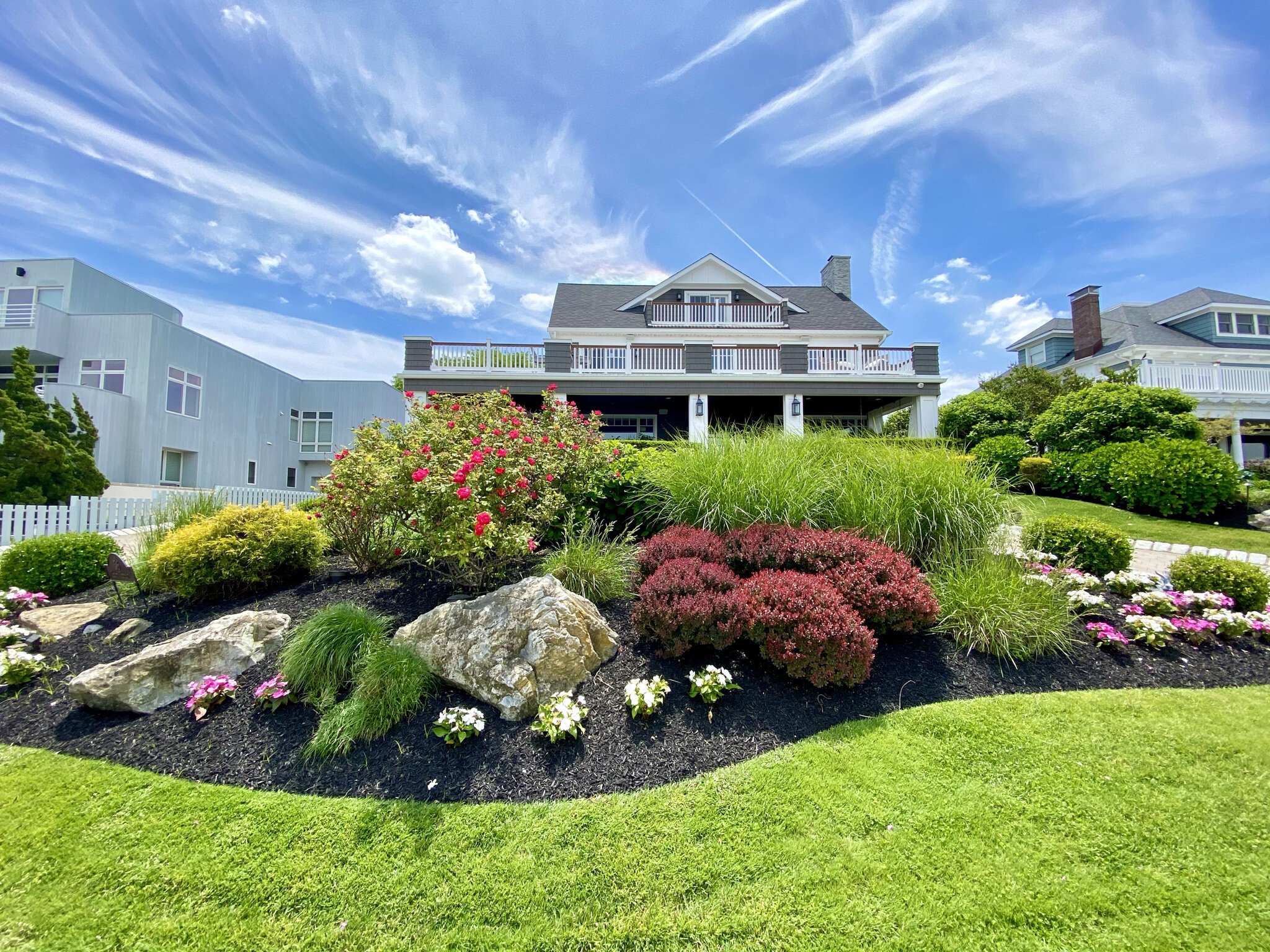A Comprehensive Guide to Creating and Implementing Effective Landscape Design Solutions
The art and science of landscape design extend beyond plain visual appeals; they entail a thoughtful integration of layout concepts, ecological stewardship, and practical application. What strategies can one utilize to make certain these landscapes not only prosper however also flourish in harmony with their environments?

Comprehending Landscape Design Principles
One may wonder what fundamental elements add to effective landscape layout. At its core, successful landscape design rests on several vital concepts that guide the setup and choice of components within an area. These principles consist of unity, equilibrium, rhythm, and proportion, each serving to develop a harmonious exterior atmosphere.
Unity describes the cohesive partnership among different components, making sure that they interact aesthetically and functionally. Balance can be attained through balanced or asymmetrical plans, permitting the landscape to feel stable and welcoming. Proportion entails comprehending the range of elements in regard to each other and the surrounding atmosphere, advertising aesthetic harmony and convenience.

Examining Your Outdoor Space
Before applying the principles of landscape layout, a complete assessment of your outdoor area is essential. This initial assessment assists specify the extent of your landscaping job and makes sure that your style aligns with the special features of your residential or commercial property. Begin by assessing the measurements of your space, taking accurate measurements to comprehend the readily available location for numerous elements such as paths, yards, and patio areas.
Next, observe the existing functions of your landscape, consisting of topography, dirt high quality, and drain patterns. These aspects dramatically affect plant choice and placement. Furthermore, evaluate the sunlight exposure across various locations throughout the day, as this will certainly affect the sorts of plants that flourish in your garden.
Consider the microclimates created by frameworks, trees, and various other challenges, as they can impact temperature and dampness degrees. Take note of any kind of existing plants or hardscape elements that you desire to get rid of or keep. This detailed assessment prepares for a well-informed and reliable landscape design remedy, making certain that your style is not only cosmetically pleasing however also practical and sustainable for many years ahead.
Sustainable Landscape Design Techniques
These techniques not only promote environmental equilibrium but likewise boost the practical and visual worth of a landscape. Carrying out reliable irrigation systems, such as drip irrigation, lessens water waste and makes certain that plants receive sufficient wetness (Palm Desert Landscaping).

An additional effective strategy is the strategic placement of trees and bushes to offer all-natural windbreaks and color, thus reducing power prices (Palm Desert Landscaping). Rain gardens can be incorporated right into the landscape design to manage stormwater overflow properly, filtering contaminants prior to they get in waterways
Choosing the Right Plants
Choosing the right plants for your landscape is crucial to accomplishing both aesthetic allure and ecological harmony. The procedure starts with an understanding of your local climate, soil conditions, and the certain microenvironments within your landscape. Analyzing factors such as sunlight direct exposure, dampness degrees, and existing flora will assist you pick plants that grow in your distinct setting.
Think about including indigenous plants, as they are well-adapted to neighborhood problems, call for much less upkeep, and assistance neighborhood wild animals. In addition, picking a varied range of types can improve biodiversity while minimizing the danger of illness and insect break outs. It is necessary to review the development behaviors, growing durations, and seasonal shades of prospective plants to develop a cohesive and vibrant landscape.
Additionally, think about the planned usage resource of the area; for example, if the area will certainly experience high foot website traffic, choose resilient ground covers. By thoughtfully picking plants that straighten with both your environmental needs and visual objectives, you can develop a lasting landscape that see here not only enhances your building however also adds positively to the surrounding ecological community.

Implementation and Upkeep Approaches
Once the ideal plants have been chosen for your landscape, the focus moves to reliable implementation and continuous upkeep approaches. Successful setup starts with correct website preparation, that includes dirt screening to determine nutrient degrees and pH, followed by changing the dirt as required. Thoroughly arrange plants according to their growth routines and light demands, making certain adequate spacing to promote healthy growth.
Watering is a critical component of execution. Establish a watering schedule that thinks about the particular requirements of each plant types, changing for seasonal modifications. Making use of drip watering systems can boost water performance and lower runoff.
Upkeep strategies need to be applied to ensure the longevity and vitality of your landscape. Regular tasks include weeding, mulching, and pruning to control development and protect against condition. Fertilizing needs to be performed based upon dirt examinations, supplying the needed nutrients without over-fertilizing.
Checking for parasites and conditions is crucial; early discovery can stop considerable damage. Seasonal adjustments to upkeep routines, such as winterizing perennials and preparing for springtime growth, will certainly ensure that your landscape continues to be aesthetically attractive and healthy and balanced year-round.
Conclusion
Successful execution and recurring maintenance even more make sure the long life and vigor of landscapes. By incorporating these components, landscapes can be transformed into stunning, useful environments that promote biodiversity and contribute positively to neighborhood health.
One could question what foundational aspects contribute to effective landscape style. At its core, effective landscape layout pivots on numerous key principles that direct the plan and choice of aspects within an area.Choosing the right plants for your landscape is critical to achieving both visual appeal and eco-friendly harmony. It is important to assess the growth routines, blooming periods, and seasonal colors of potential plants to create a vibrant and natural landscape.
As soon as the ideal plants have actually been selected for your landscape, the focus shifts to effective implementation and recurring upkeep approaches.